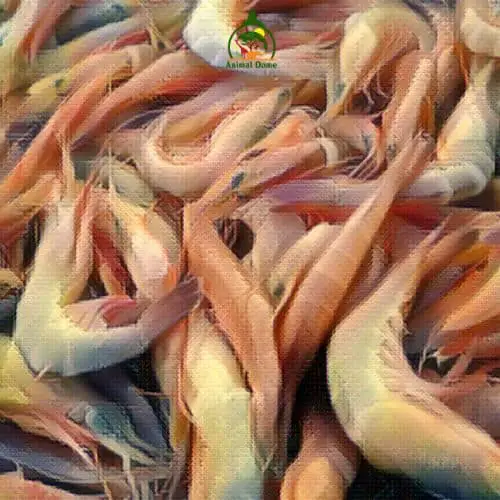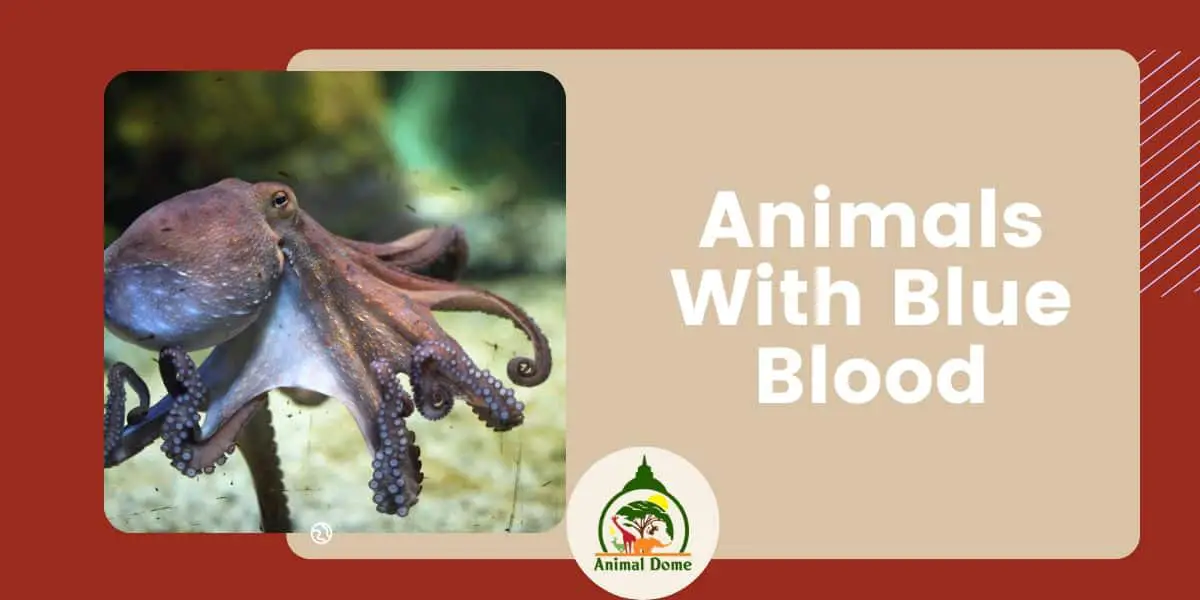Animals with blue blood are some of the most fascinating creatures on Earth. From octopuses to horseshoe crabs, these animals have unique adaptations that set them apart from other animal species. These animals not only have a distinct color in their blood, but they also have special traits such as being able to survive without oxygen and having an exoskeleton instead of an internal skeleton.
Sea cucumbers, spiders, clams, lobsters, snails and shrimp all use hemocyanin for respiration as well. It is truly amazing how these animals are able to survive in extreme environments using their blue-bloodedness!
Keep reading below where I go into all of the fun details about all of the animals that I know of that have blue blood.
1. Octopus
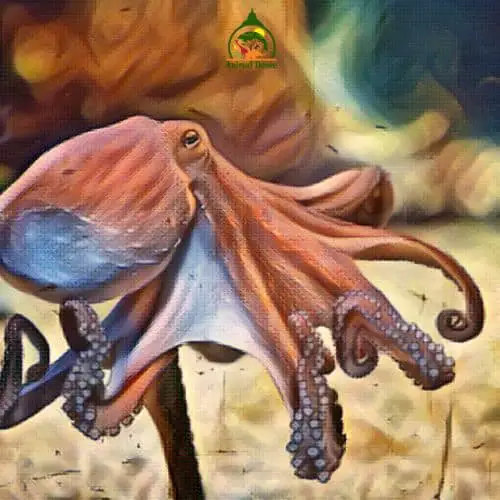
An Octopus’s blood is blue because it contains a copper-based protein called hemocyanin, which carries oxygen through the body. Unlike humans who have red blood cells with iron-containing hemoglobin that gives us our red color, octopuses and some other animals use hemocyanin to transport oxygen in their bodies instead.
Hemocyanin binds to oxygen more loosely than hemoglobin does, so it takes on a bluish hue when combined with oxygen. This helps the octopus regulate its body temperature and also provides camouflage from predators.
2. Squid

Just like the Octopus, a Squid’s blood is blue also due to hemocyanin, which carries oxygen through their bodies. Hemocyanin binds to oxygen more loosely than the iron-containing hemoglobin that humans use, so when combined with oxygen it takes on a bluish hue. This helps the squid regulate its body temperature and also provides camouflage from predators.
Squids are able to survive in extreme environments due to their unique adaptation of having blue blood. This is because squids have an exoskeleton instead of an internal skeleton like most animals which makes them better suited for living in high-pressure ocean depths where temperatures can be very cold.
Having a copper-based protein for transporting oxygen also means that they require less energy than other animals that use iron-containing proteins, allowing them to conserve energy and survive in extreme environments with limited resources.
3. Horseshoe crabs

Horseshoe crabs are one of the oldest living species on Earth, with some estimates saying they have been around for 450 million years! They can survive without oxygen for up to 4 days and live in temperatures ranging from -2°C to 35°C (28-95°F) mainly because they can filter out toxins in the water by using specialized cells in their gills called hemocyanin which gives them the distinctive bluish hue in their blood.
DID YOU KNOW:
A Horseshoe crab’s blood is a key way of testing Covid-19 vaccines because it contains a protein called Limulus Amebocyte Lysate (LAL). This protein helps detect the presence of endotoxins, which are toxins found in some bacteria and fungi.
The LAL reacts with the endotoxins to form a gel-like substance that can be used to measure their levels. As such, using this method for testing Covid-19 vaccines is safer than other methods as it does not require animal or human trials.
Furthermore, horseshoe crab blood has been used as an indicator of water quality for many years due to its ability to filter out toxins from the environment. This makes it a reliable way of testing the safety and efficacy of Covid-19 vaccines.
Learn more about this in the video below…
4. Velvet worms

Velvet worms use hemoglobin for respiration making them one of the few animals to have both hemoglobin and hemocyanin. The unique adaptation of having both hemoglobin and hemocyanin gives the velvet worm an advantage over other animals that only have one or the other type of protein for transporting oxygen.
The combination of these two proteins allows the velvet worm to switch between using either one depending on what environment they are in, allowing them to survive in extreme temperatures, airless environments, and low-oxygen areas. This adaptation also allows the velvet worm to be more efficient with its energy use, as it can switch between proteins depending on the availability of oxygen.
Additionally, the hemocyanin in the velvet worms’ blood helps them survive without needing oxygen, making them well-adapted to living in extreme environments with limited resources.
The bluish hue in its blood is beneficial for the velvet worm as it allows them to regulate its body temperature and also provides camouflage from predators.
Overall, this blue-blooded species has many advantages that make it well adapted for surviving in extreme conditions.
5. Sea cucumbers

6. Spiders
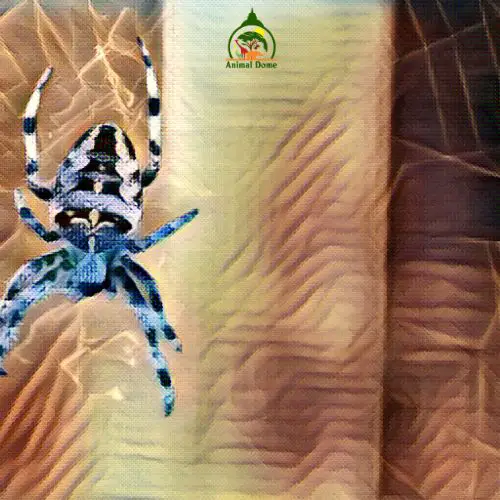
The unique adaptation of having blue blood gives spiders an advantage over other animals that use iron-containing proteins to transport oxygen. The copper-based hemocyanin binds to oxygen more loosely than iron-containing proteins do, allowing the spider to conserve energy when oxygen is scarce and still be able to survive in low-oxygen areas.
This adaptation also allows the spider to be more efficient with its energy use, as it can switch between proteins depending on the availability of oxygen. Another advantage that spiders have due to their blue-bloodedness is increased resistance to high temperatures.
The bluish hue of their blood helps them absorb and retain heat better than animals with red blood, allowing them to survive in hot environments where other species would not be able to survive. Overall, this blue-blooded species has many advantages that make it well adapted for surviving in extreme conditions.
7. Clams

The unique adaptation of having blue blood gives clams an advantage over other animals that use iron-containing proteins to transport oxygen. The copper-based hemocyanin binds to oxygen more loosely than iron-containing proteins do, allowing the clam to conserve energy when oxygen is scarce and still be able to survive in low-oxygen areas. This adaptation also allows the clam to be more efficient with its energy use, as it can switch between proteins depending on the availability of oxygen.
Other animals that use blue blood in the same fashion include:
8. Lobsters
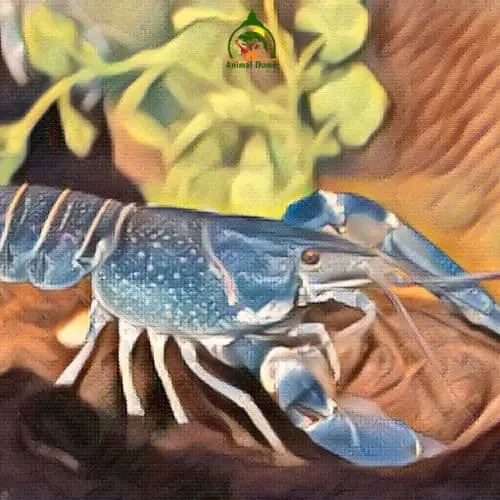
9. Snails

10. Shrimp
